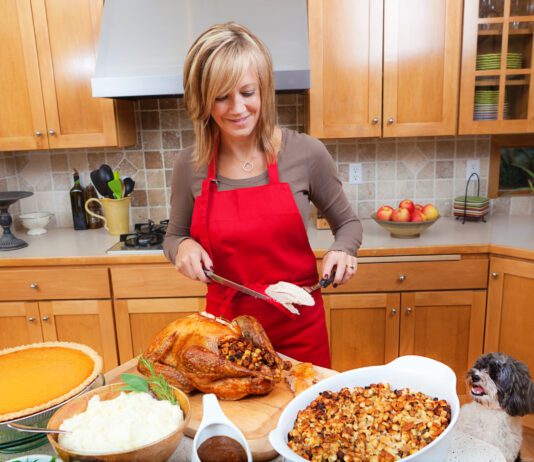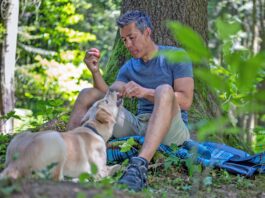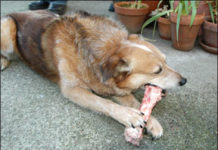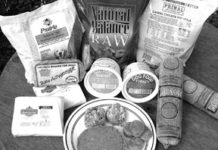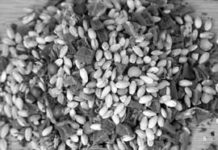Home-Prepared Dog Food
including ground meat
Feeding a Raw Dog Food Diet Takes Experience
Many of us would like to feed our dogs a biologically appropriate raw diet, but lack the time and experience to ensure that the menu is complete and balanced. Frozen commercial diets are the answer. Despite what many makers of conventional canned or dry pet foods would have you believe, raw diets for dogs are not a modern fad, but a return to the dog’s not-so-distant past.
Shopping for Nutritional Supplements For Your Dog
Every two weeks I faithfully fill the pill organizers for my Boxer, Tyler. He receives a number of supplements, some for general nutrition and well-being, and some specific to his particular health challenges, including Addison’s disease. I’m not the only one performing this ritual. According to the American Pet Products Manufacturers Association, about nine percent of all dogs receive vitamins regularly; perhaps an even greater percentage of WDJ readers give supplements to their canine companions.
Letters 10/04: Additional Resources
Thanks so much for “Fine Tuning” in your September issue. As usual, you covered topics I’m coping with every day. My one-year-old Golden, Midas, might as well be “Hannah” in disguise: he gets aroused by exactly the same things. Now I don’t feel so bad, knowing even Editor Nancy Kerns needed Pat Miller’s tips! …
Meat-Based Home-Prepared Dog Food Diets
We’ve always said that a home-prepared diet, comprised of fresh, wholesome foods, is ideal for all dogs. We recognize that many people can’t or won’t shop for and prepare their dogs’ food; they may not shop for and prepare their own! This is why we review the best-quality commercial dry and canned foods every year. However, a growing number of brave folks want to realize the benefits of homemade food for their dogs.
Semi-Homemade Dog Food
We frequently write about kibble and canned dog food, but have neglected some of the less common (but no less worthy) types of commercial foods. Here’s a look at commercial products that make it easy to feed a home-prepared diet. In our reviews of dry and canned foods, we make specific recommendations for selecting products for your dog. We’re not going to do this here; instead, we simply want to inform you about these alternatives to conventional kibble and canned food, and describe the differences between them.
Best Food Grinders Used For Home-Prepared Dog Food Diets
People who are interested in feeding a home-prepared diet to their dogs often delay the transition as they grapple with various concerns. Frequently, they have come to believe the claims that a home-prepared diet offers dogs superior nutrition and can result in increased health and vigor . . . but they are still beset by fears that their dogs will suffer a broken tooth or perforated intestines caused by eating raw bone fragments.
The Evolution of the Raw Dog Food Diet
Canines have eaten raw for a whole lot longer than they've eaten cooked foods! It's difficult for us to understand, in the face of this one fact, how any dog guardians (much less thousands of veterinarians) could deny that raw food diets are healthful for dogs. But is it really best for ALL dogs? Actually, there are exceptions.
More On Frozen Foods!
50808
Frozen Raw Meat-Based Dog Food Diets
There are thousands of dog guardians who feed their dogs homemade BARF-based diets, buying all the ingredients and preparing their dogs’ meals from scratch. People who utilize home-prepared diets are happy to discuss the many benefits of this feeding method for their dogs, including clean, tartar-free teeth; fresh breath; strong bones, muscles, and joints; a glossy coat; a healthy amount of energy and a balanced temperament; and overall vibrant good health. For all the people who have made the leap to a homemade, meat-based diet for their dogs, however, there are many more who would like to make the change, but who are intimidated by the challenge of “getting it just right.” Some are afraid of failing to present their dogs with a balanced array of nutrients; others fear bacterial contamination from handling raw meats.
The Nutritional Adequacy of Raw Food Diets
Research is needed to analyze the nutritional adequacy of raw food diets. However, a published study didn’t accomplish that goal. The Journal of the American Veterinary Medical Association (JAVMA) published an article written by two veterinarians about homemade and commercially made raw meat-based diets. (A similar article, based on the same data, was published in the AKC Gazette.) The article has been regarded by many proponents of homemade diets as a warning shot fired by the commercial-food -producing community and their traditional veterinary medical footsoldiers over the bow of the raw feeding ship.
Comparing the Best Raw Dog Food Diet Plans
Have you ever noticed that dog owners tend to select one canine expert to follow in the area of dog nutrition and dog food and then another expert for training? And they’ll often adhere to their personal guru’s program no matter what? Is it our unconscious dog-like loyalty, or what? Many of our readers are already preparing their own dog food, and generally, they are following the guidelines of some canine nutrition expert. However, many more of our readers have not yet sorted out the differences between the raw dog food diets being promoted today.


